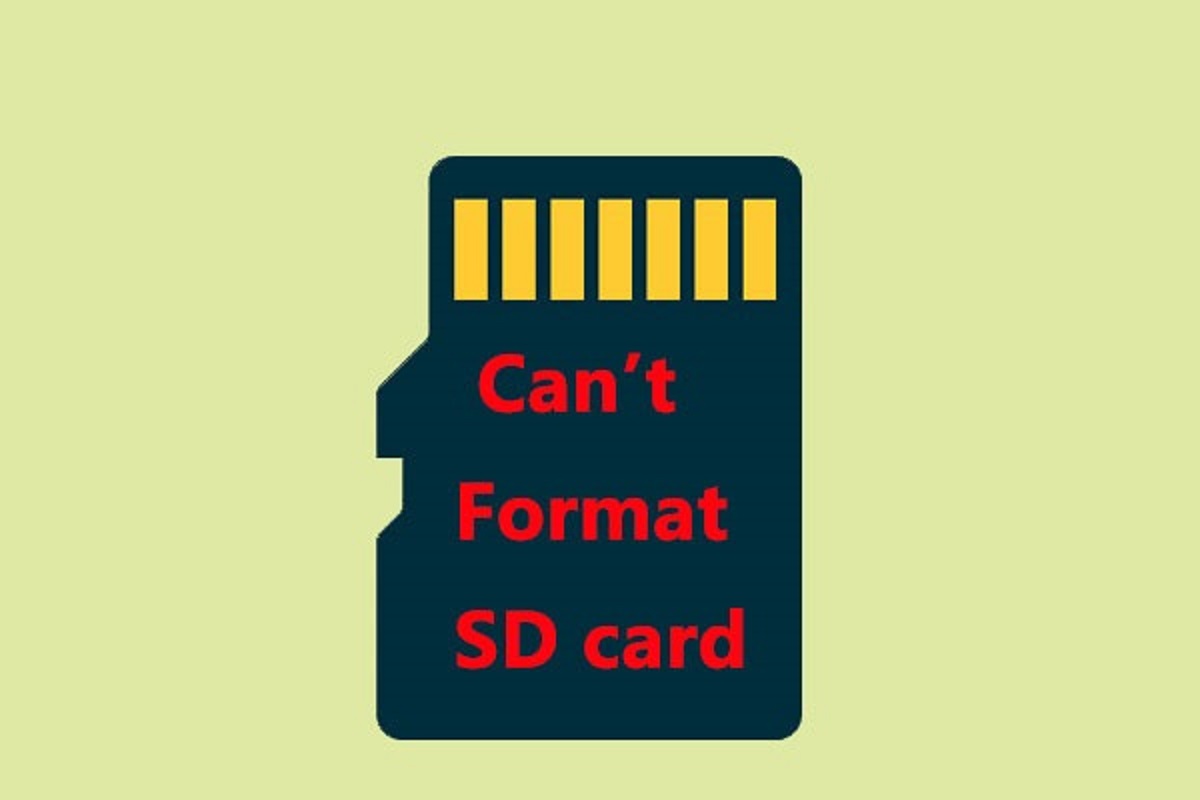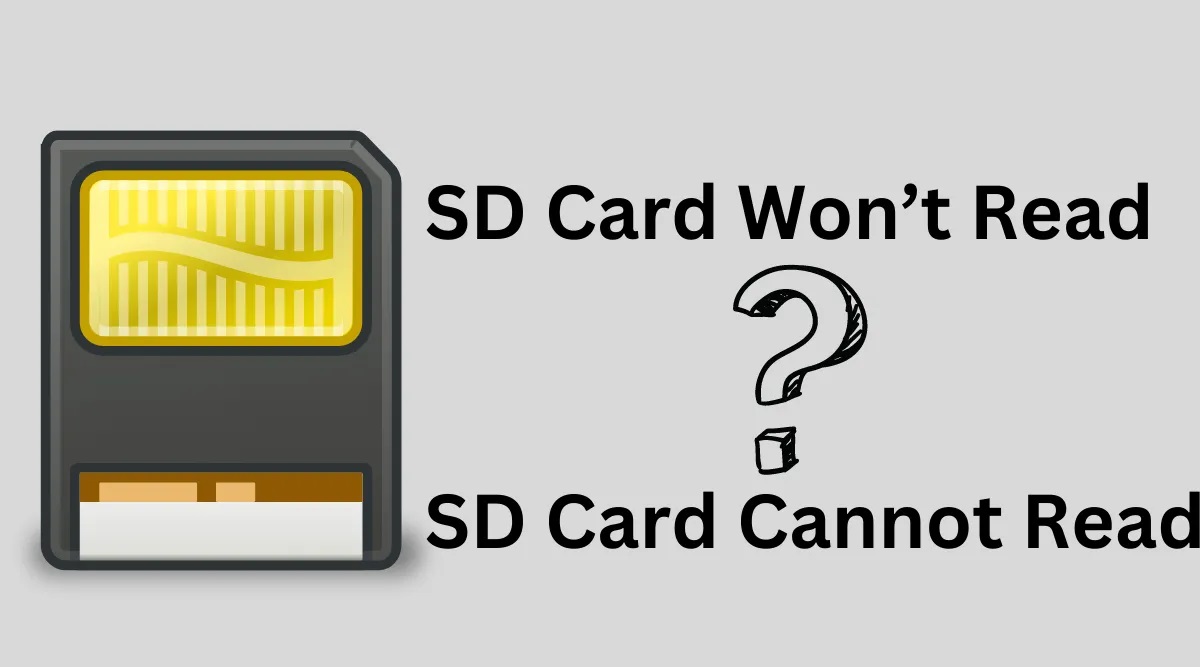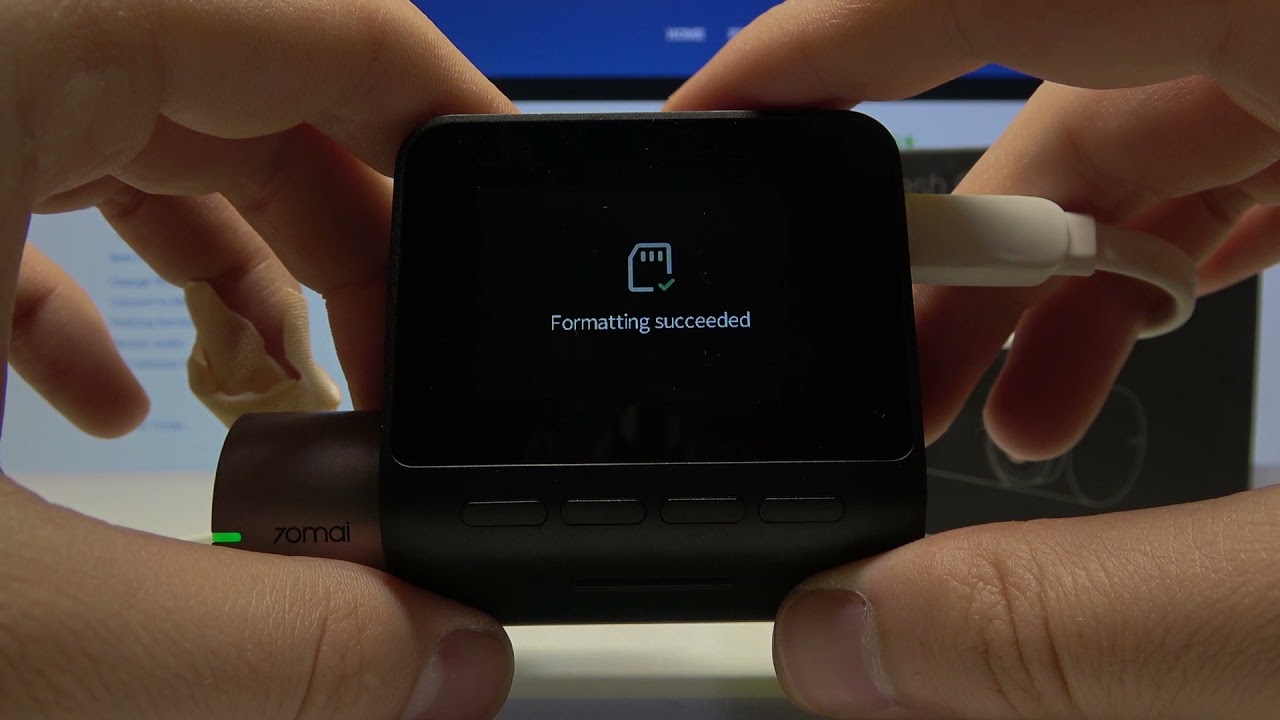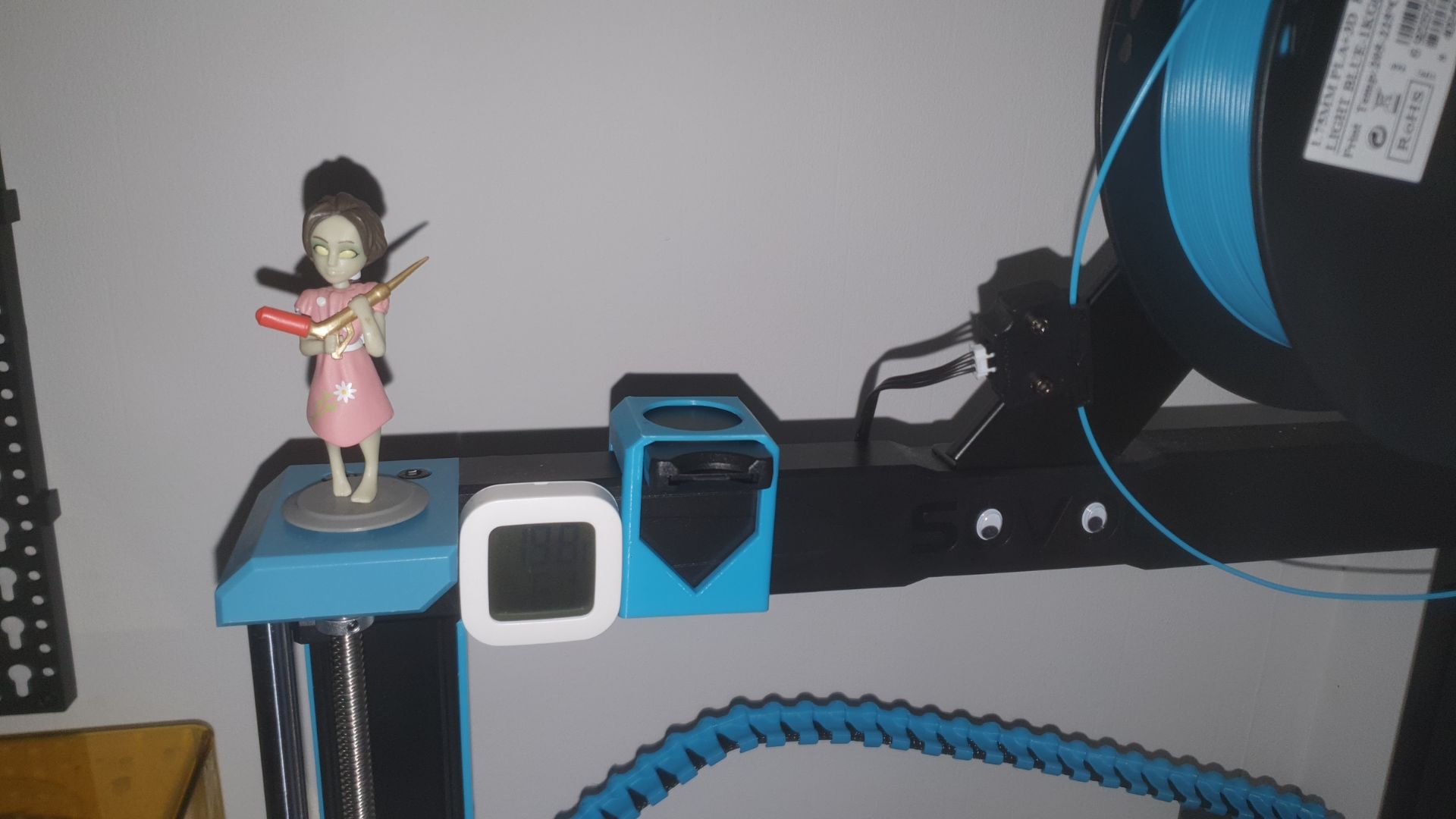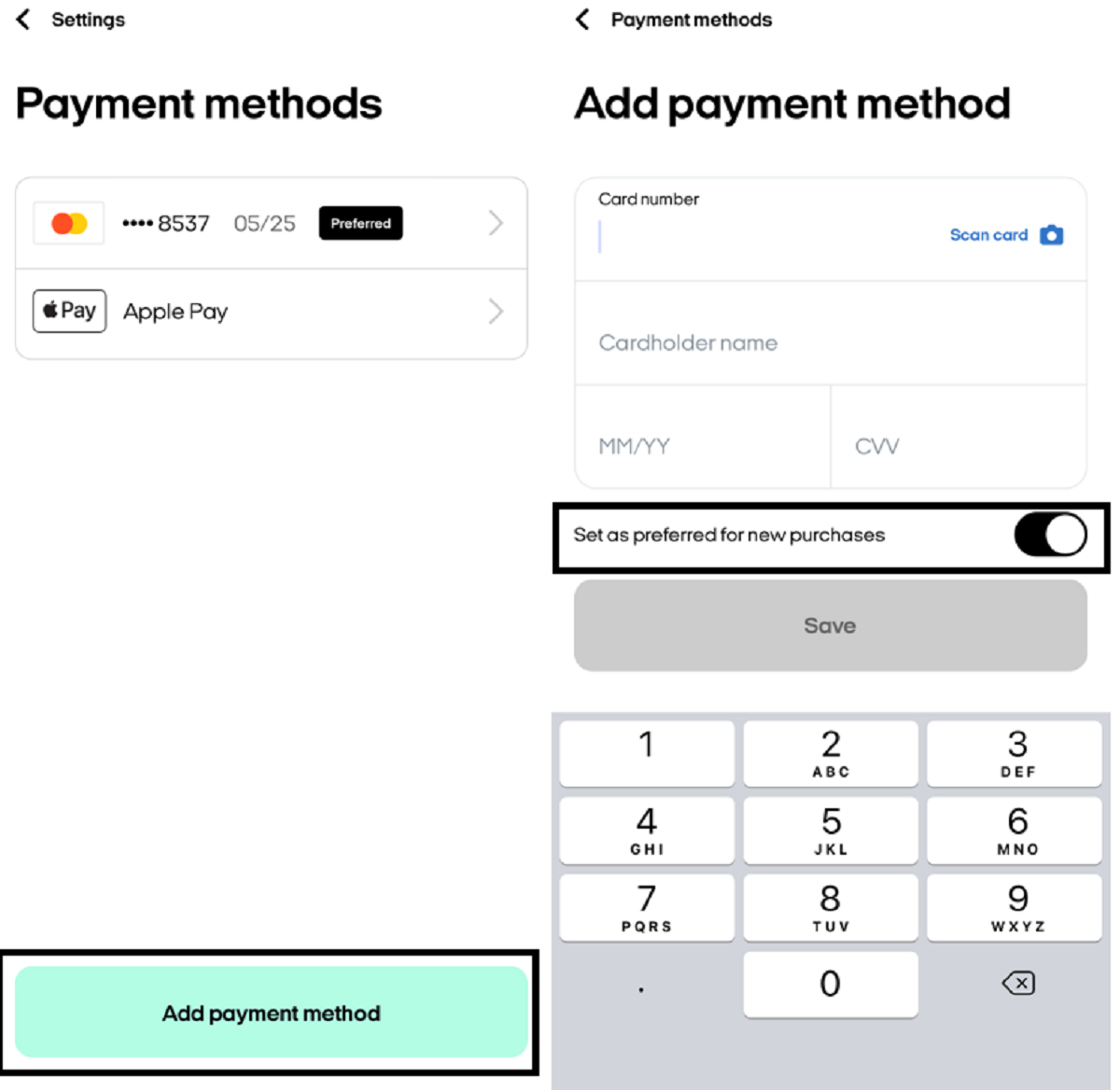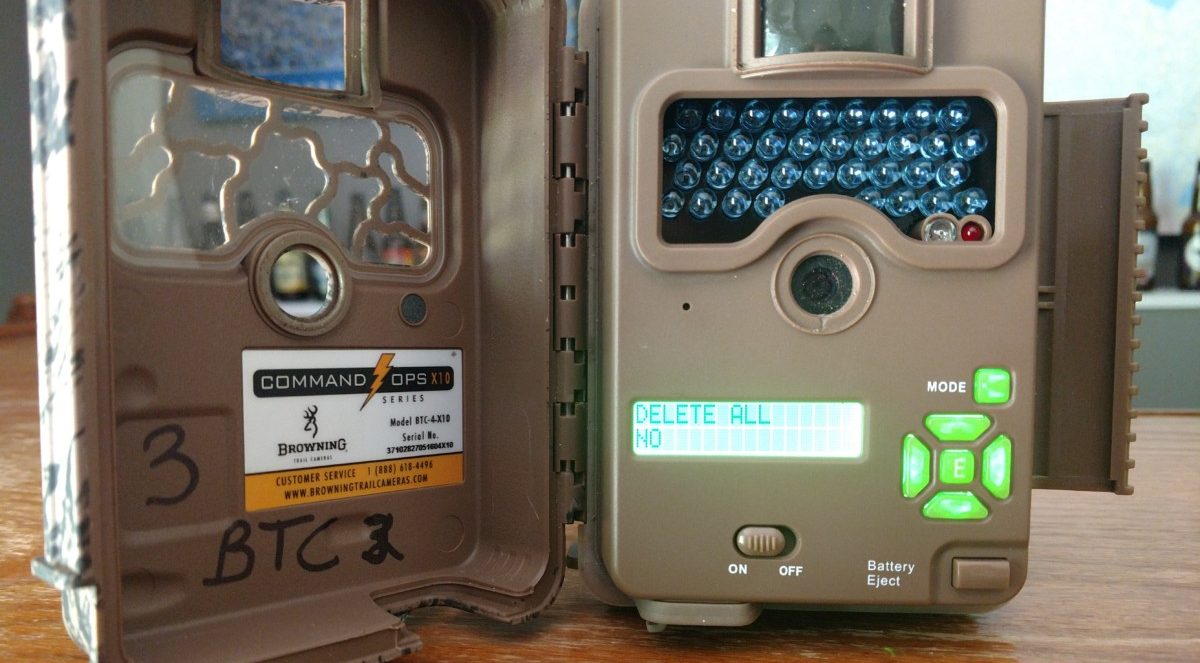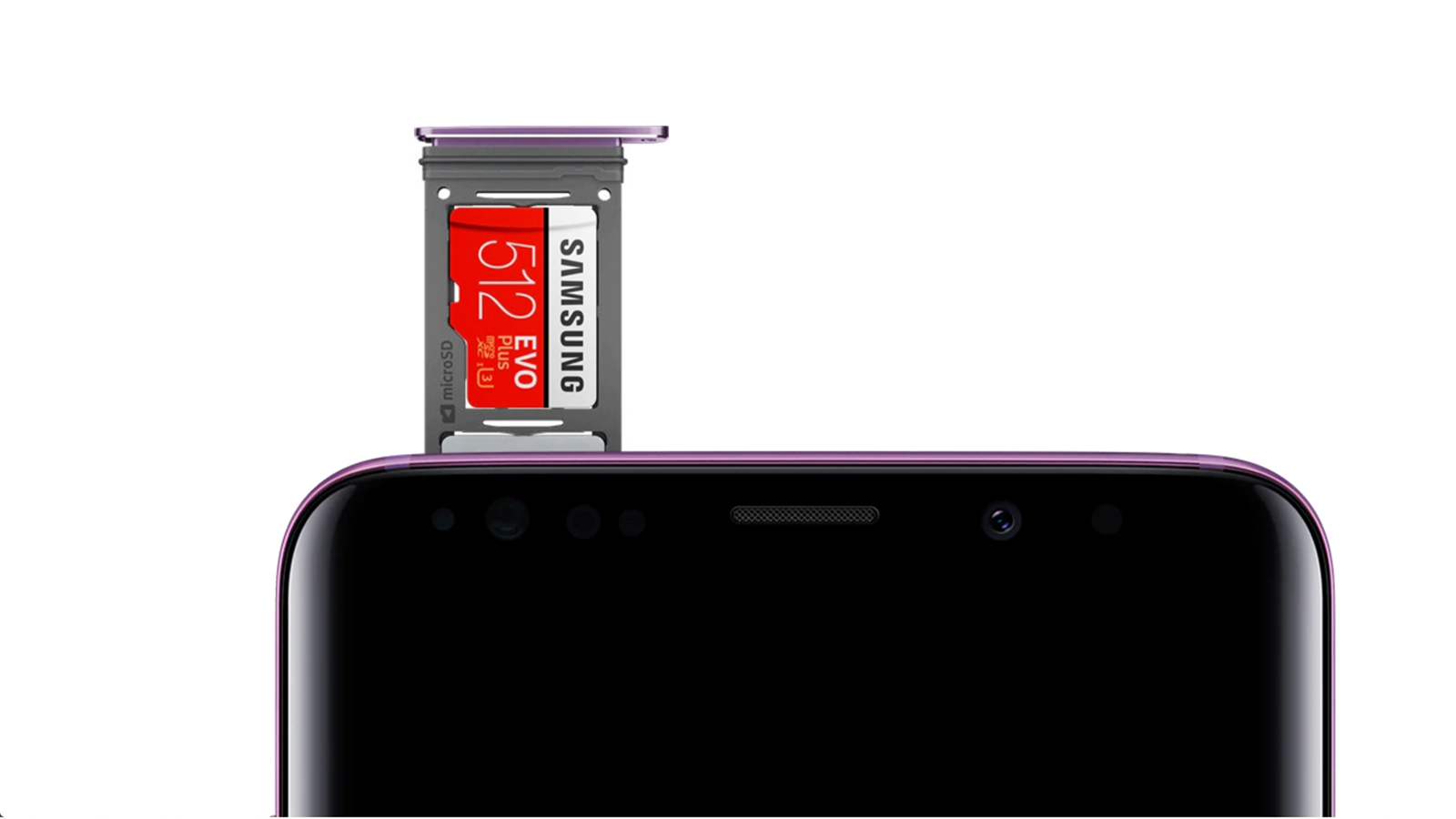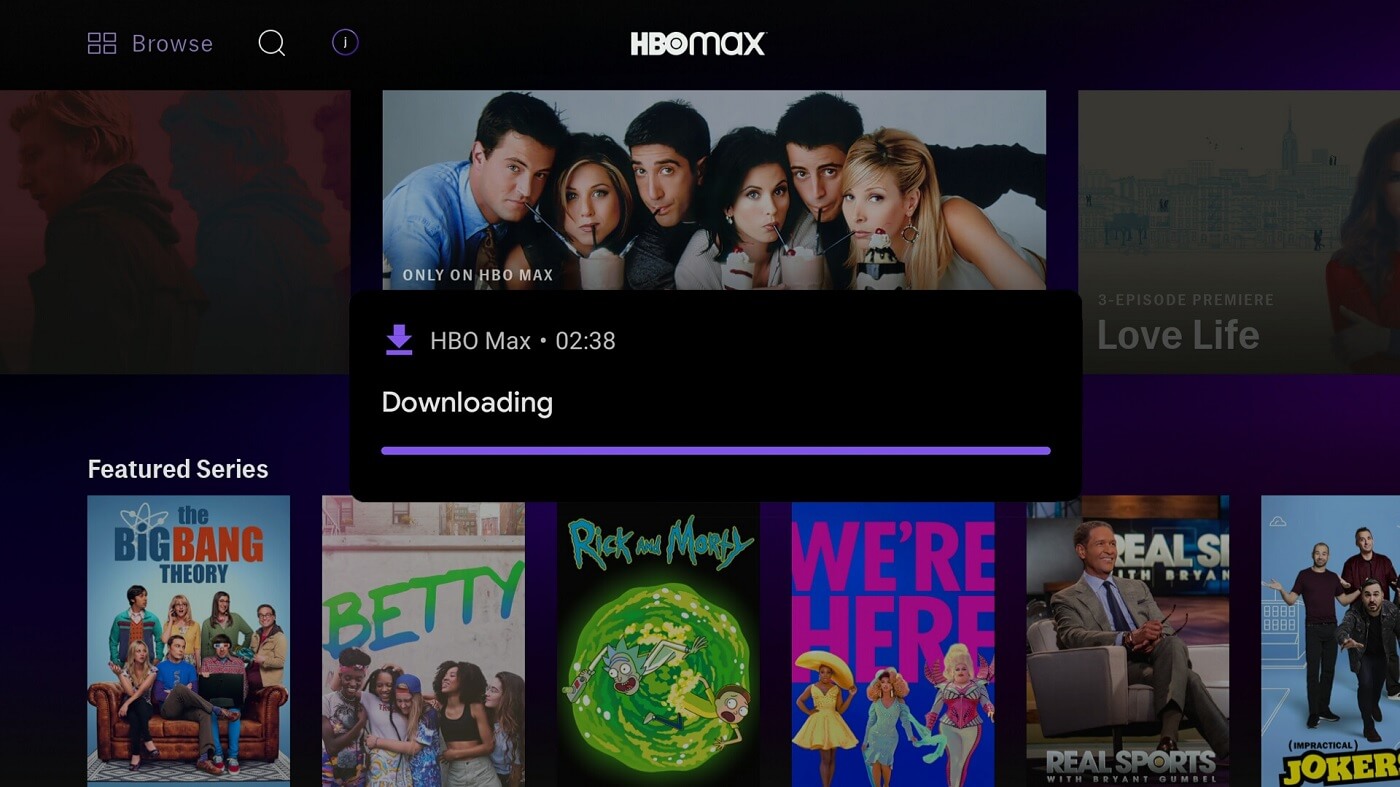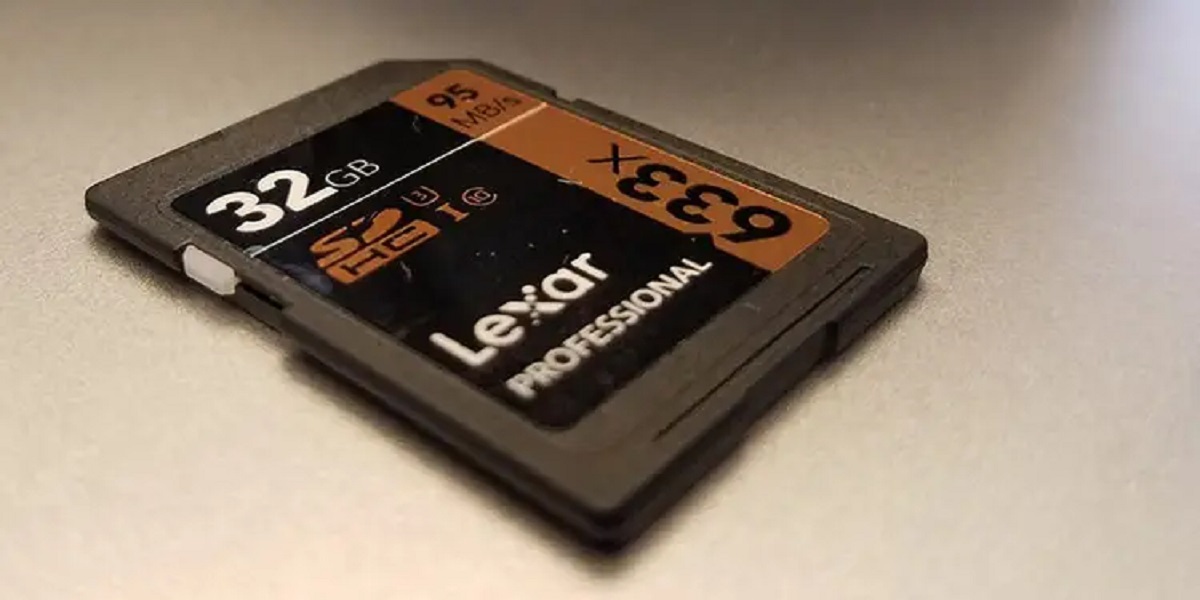Introduction
Welcome to the world of SD cards, where you can store and carry your digital memories, documents, and files with ease. However, there may come a time when you encounter issues with formatting your SD card. This frustrating situation can prevent you from accessing or utilizing your precious data effectively. But fear not, as we’re here to help you understand the reasons behind SD card formatting issues and provide effective solutions to overcome them.
An SD card (Secure Digital card) is a portable storage device commonly used in cameras, smartphones, tablets, and other digital devices. It allows you to store and transfer data, including photos, videos, music, and documents. Formatting an SD card prepares it for use and ensures compatibility with your device. While formatting should be a straightforward process, there are times when you encounter difficulties.
There are several common reasons why your SD card may have formatting issues. These include insufficient permissions, write protection, a corrupted file system, or physical damage to the card itself. Understanding these factors can help you troubleshoot the problem effectively.
Insufficient permissions can arise when you try to format an SD card without the necessary administrative rights. Operating systems, such as Windows or macOS, require elevated privileges to perform certain actions, including formatting storage devices. Without these permissions, you may encounter errors or restrictions during the formatting process.
Another possible culprit is write protection, a feature designed to prevent unintentional deletion or modification of files on the SD card. Some SD cards have a physical switch that you can toggle to enable or disable write protection. If the write protection switch is engaged, you will not be able to format the SD card until you disable this feature.
A corrupted file system can also lead to formatting issues. Over time, an SD card’s file system can become corrupted due to improper ejection, power interruptions, or malware infections. When the file system is damaged, the operating system may be unable to read or write data to the card, necessitating a format to resolve the issue.
Lastly, physical damage to the SD card itself, such as a bent or broken connector, can prevent successful formatting. If the card is physically damaged, it may no longer establish a proper connection with the device, resulting in formatting difficulties.
In the next sections, we will explore various solutions to overcome SD card formatting issues, providing step-by-step instructions for both Windows and macOS operating systems. By following these methods, you can regain access to your SD card and ensure it is formatted correctly.
Understanding SD Cards
Before delving into the reasons behind SD card formatting issues, it is essential to have a basic understanding of what an SD card is and how it functions. SD cards, short for Secure Digital cards, are widely used flash memory storage devices that provide portable storage for various digital devices, including cameras, smartphones, tablets, and gaming consoles.
SD cards come in different sizes and capacities, with the most common types being standard SD, microSD, and miniSD. The storage capacity can range from a few gigabytes to several terabytes, allowing users to store a vast amount of data, including photos, videos, music, and documents.
One of the key advantages of SD cards is their compact size, making them convenient for storing and transporting data. With their plug-and-play functionality, SD cards can be easily inserted into compatible devices, allowing for quick and seamless access to stored content.
SD cards utilize flash memory technology, which is non-volatile and capable of retaining data even when not powered. This means that once data is stored on an SD card, it remains intact even if the card is removed from the device or the power supply is disconnected.
In terms of compatibility, SD cards are widely supported by various operating systems, including Windows, macOS, and Linux. Most devices with SD card slots can read and write data to SD cards without the need for additional drivers or software.
To ensure data security and integrity, SD cards implement a built-in error correction mechanism that automatically detects and corrects errors during data transfer. This helps to prevent data corruption and ensures reliable storage and retrieval of information.
Furthermore, SD cards come with different speed classes or ratings, indicating the minimum sustained write speed of the card. These speed classes are denoted by a number inside a circle or U-shaped symbol, such as Class 2, Class 4, Class 6, Class 10, UHS Speed Class 1 (U1), and UHS Speed Class 3 (U3). Higher speed classes are recommended for tasks that require faster data transfer, such as recording high-definition videos or capturing burst photos.
Having a solid understanding of SD cards and their functionalities is crucial in troubleshooting formatting issues. By grasping the basics of SD cards, you can effectively identify and resolve problems related to formatting, ensuring that your valuable data remains accessible and secure.
Common Reasons for SD Card Formatting Issues
SD card formatting issues can be frustrating and prevent you from accessing or using your valuable data effectively. Understanding the common reasons behind these problems can help you troubleshoot and resolve them more effectively. Here are some of the most frequent causes of SD card formatting issues:
Insufficient Permissions: One of the common reasons for formatting issues is insufficient permissions. When you try to format an SD card without the necessary administrative rights, the operating system may restrict or deny access to the formatting process. This can result in errors or unsuccessful formatting attempts.
Write Protection: SD cards often come with a write protection feature, typically in the form of a physical switch. When the write protection is enabled, you cannot modify or delete files on the SD card, including formatting it. Make sure to check if the write protection switch is engaged and disable it before attempting to format the card.
Corrupted File System: Over time, the file system on an SD card can become corrupted, leading to formatting issues. Corrupted file systems can occur due to improper ejection of the SD card, power interruptions, or even malware infections. When the file system is damaged, the operating system may have difficulty reading or writing data to the card, necessitating a format to resolve the issue.
Physical Damage: Physical damage to the SD card itself can also cause formatting problems. If the card is bent, has a broken connector, or is damaged in any other way, it may not establish a proper connection with the device, leading to formatting difficulties. In such cases, repairing or replacing the damaged SD card may be necessary.
Incompatible File System: Sometimes, SD cards may have an incompatible file system that prevents them from being recognized or formatted by your operating system. For example, if the SD card has a file system format that is not supported by your device, you will encounter formatting errors. Ensuring compatibility between the SD card’s file system and your operating system is important to avoid formatting issues.
Unallocated Space: In some cases, an SD card may have unallocated space that prevents it from being formatted. Unallocated space refers to a portion of the SD card that is not assigned to any file system or partition. This can occur when partitions are deleted or when the SD card is new and has not been formatted. Assigning a file system to the unallocated space can resolve the formatting issue.
By understanding these common reasons for SD card formatting issues, you can now proceed to the next section, where we explore effective solutions to overcome these problems. Whether it’s insufficient permissions, write protection, a corrupted file system, physical damage, or an incompatible file system, we have you covered with step-by-step instructions to help you format your SD card successfully.
Insufficient Permissions
One of the common reasons why formatting an SD card can be a challenge is insufficient permissions. When attempting to format an SD card, you may encounter errors or face restrictions if you do not have the necessary administrative rights or privileges.
Operating systems like Windows and macOS require elevated privileges to perform certain actions, including formatting storage devices. Without these permissions, you may find that the formatting process is restricted or not allowed at all.
If you are unable to format your SD card due to insufficient permissions, here are some steps you can take to overcome this issue:
1. Run as Administrator (Windows): To gain the necessary administrative rights, right-click on the formatting tool or command prompt and select “Run as administrator”. This will prompt a User Account Control (UAC) confirmation window. Click “Yes” to proceed with elevated privileges. You should now be able to format the SD card without any permission restrictions.
2. Use an Administrator Account (macOS): On macOS, you can ensure you have the required permissions by formatting the SD card using an administrator account. Log in to the administrator account, open Disk Utility (located in the Utilities folder), select the SD card from the sidebar, and click on the “Erase” tab. From there, you can format the SD card with the necessary privileges.
3. Change User Account Control Settings (Windows): In some cases, User Account Control (UAC) settings in Windows may limit formatting permissions. To modify these settings, go to the Control Panel, search for “User Account Control Settings”, and slide the slider to the lowest level. Keep in mind that modifying these settings may compromise the security of your system, so exercise caution and only make changes if you understand the implications.
4. Grant Write Permission (macOS Terminal): If you are formatting the SD card using the Terminal on macOS, you may need to grant write permission explicitly. Make sure you are logged in with an administrator account, and when using the “diskutil eraseDisk” command, append “-force” at the end. This will override any write permission restrictions and allow the SD card to be formatted.
By following these steps, you should be able to overcome insufficient permissions when formatting your SD card. Remember to exercise caution when making changes to system settings or using administrative privileges. With the necessary permissions in place, you can proceed to format your SD card and regain access to its full functionality.
Write Protection
If you’re trying to format an SD card and encountering difficulties, it’s possible that the card has write protection enabled. Write protection is a built-in feature designed to prevent unintentional deletion or modification of files on the SD card. When write protection is enabled, you are restricted from formatting the SD card or making any changes to its contents.
Here are some steps you can take to check and disable write protection on an SD card:
1. Check the Physical Switch: Many SD cards have a physical write protection switch located on the side. This switch can be toggled to enable or disable write protection. Make sure the switch is in the unlocked position (usually indicated by an arrow pointing towards the contact points of the SD card). If the switch is in the locked position, you won’t be able to modify the card or format it. Toggle the switch to the unlocked position and try formatting the SD card again.
2. Check the Write Protection Tab (microSD adapter): If you’re using a microSD card in an adapter, the adapter itself may have a write protection tab. Slide the tab to the unlocked position to disable write protection. The microSD card will inherit the write protection status of the adapter, so ensuring the adapter is set to the unlocked position is crucial.
3. Unlock Write Protection via Software: In some cases, SD cards may have write protection enabled through software settings. To disable this, you can use the SD card manufacturer’s software or third-party tools to unlock the write protection feature. Simply launch the software, locate the option to disable write protection, and follow the instructions provided.
4. Try a Different Card Reader: Sometimes, the card reader you’re using may have its own write protection mechanism. If you’ve tried the above solutions and are still unable to format the SD card, try using a different card reader or inserting the card into a different device with a built-in card slot. This can help determine if the write protection issue is specific to the card reader you’re using.
5. Use Diskpart (Windows): On Windows, you can use the Diskpart utility to remove write protection from the SD card. Open a Command Prompt window with administrative privileges, type “diskpart” and hit Enter, then enter the command “list disk” to display all connected disks. Locate your SD card based on its size and use the “select disk X” command (replace X with the appropriate disk number) to select the SD card. Finally, type “attributes disk clear readonly” to remove the write protection attribute from the SD card.
By following these steps, you can effectively check and disable write protection on your SD card. Once write protection is disabled, you should be able to format the SD card and utilize it without any restrictions.
Corrupted File System
Another common reason for SD card formatting issues is a corrupted file system. Over time, the file system on an SD card can become damaged or corrupted, resulting in errors or difficulties when attempting to format the card.
A corrupted file system can occur due to various factors, including improper ejection of the SD card, power interruptions, or even malware infections. When the file system is damaged, the operating system may struggle to read or write data to the card, and formatting becomes necessary to resolve the issue.
If you suspect that the file system on your SD card is corrupted, here are some steps you can take to address the problem:
1. Use Built-in Utility (Windows and macOS): Both Windows and macOS offer built-in utilities that can help repair a corrupted file system on an SD card. In Windows, you can use the built-in Disk Management tool. Right-click on the Start button, select Disk Management, locate your SD card, right-click on it, and choose Format to initiate the formatting process. On macOS, you can use the built-in Disk Utility. Open Disk Utility, select your SD card, click on the Erase tab, and follow the instructions to format the card.
2. Check Disk Errors (Windows Command Prompt): In Windows, you can use the Command Prompt to check and repair disk errors on an SD card. Open Command Prompt with administrative privileges, type “chkdsk X: /f” (replace X with the drive letter assigned to your SD card), and hit Enter. This command will scan the SD card for errors and attempt to fix them. Once the process is complete, you can try formatting the SD card again.
3. Run First Aid (macOS Terminal): On macOS, you can use the Terminal to run First Aid, which checks and repairs a corrupted file system. Launch Terminal, type “diskutil list” and hit Enter to list all connected disks. Locate your SD card based on its size and note the disk identifier (e.g., diskX). Then, type “diskutil verifyDisk diskX” and hit Enter to verify the disk. If any errors are detected, type “diskutil repairDisk diskX” to repair the disk. Once the repair process is complete, you can proceed with formatting the SD card.
4. Use Third-Party Recovery/Repair Tools: If the built-in utilities fail to repair the corrupted file system, you can consider using third-party recovery or repair tools specifically designed for SD cards. These tools often have advanced algorithms to recover and repair corrupt file systems. Research and choose a reputable tool, follow the provided instructions, and allow the tool to scan and repair the SD card as needed.
By following these steps, you can effectively address a corrupted file system on your SD card. Repairing the file system will ensure that your SD card is in a healthy state, allowing you to format it and use it without any issues.
Physical Damage
In some cases, formatting an SD card becomes a challenge due to physical damage to the card itself. Physical damage can include a bent or broken connector, a cracked casing, or any other form of physical impairment that affects the functionality of the SD card.
When an SD card is physically damaged, it may not establish a proper connection with the device, leading to formatting difficulties. In such circumstances, it is important to assess the extent of the damage and consider the following steps:
1. Check the Connector: Carefully inspect the SD card’s connector to ensure it is not bent, dirty, or damaged. If there is any debris or dirt on the connector, gently clean it with a soft cloth or a cotton swab slightly dampened with isopropyl alcohol. Avoid using excessive force that could potentially worsen the damage.
2. Test with a Different Device: Try inserting the SD card into a different device with a compatible SD card slot to see if the formatting issue persists. If the problem occurs with multiple devices, it is likely that the physical damage is affecting the card’s functionality.
3. Contact Professional Data Recovery Services: If the data stored on the SD card is of utmost importance and the physical damage prevents successful formatting, it may be necessary to seek professional data recovery services. These experts have specialized tools and expertise to recover data from physically damaged storage devices, including SD cards.
4. Replace the SD Card: In cases where the physical damage is severe and irreversible, the best course of action is to replace the damaged SD card with a new one. Make sure to safely dispose of the damaged card to prevent any potential data breaches or misuse.
It is important to note that physical damage is often not repairable by the end-user. Attempting to fix a physically damaged SD card without proper knowledge or equipment may lead to further damage. Therefore, seeking professional assistance is recommended in situations where the physical damage is beyond basic cleaning or troubleshooting.
By considering these steps, you can assess the physical condition of your SD card and determine the best course of action. Remember to handle SD cards with care and take preventive measures to avoid physical damage, such as storing them in protective cases and avoiding rough handling.
Effective Solutions for SD Card Formatting Issues
Encountering formatting issues with your SD card can be frustrating, but rest assured, there are several effective solutions that can help you overcome these challenges. Whether you’re facing insufficient permissions, write protection, a corrupted file system, or physical damage, the following solutions can assist you in resolving SD card formatting issues:
Solution 1: Checking for Write Protection
Ensure that the write protection switch on the SD card or adapter is in the unlocked position. This switch is designed to prevent accidental deletion or modification of files.
Solution 2: Using Disk Management on Windows
On Windows, you can utilize the Disk Management tool to format your SD card. Right-click on the Start button, select Disk Management, locate your SD card, right-click on it, and choose Format.
Solution 3: Using Disk Utility on macOS
For macOS users, the Disk Utility application provides a straightforward way to format an SD card. Open Disk Utility, select your SD card from the sidebar, click on the Erase tab, and follow the instructions to format the card.
Solution 4: Using Command Prompt on Windows
If you’re comfortable using the Command Prompt, you can employ various commands to format your SD card. Open Command Prompt with administrative privileges, select the SD card disk, and use the appropriate command, such as “format” or “diskpart”, to initiate the formatting process.
Solution 5: Using Terminal on macOS
macOS users can utilize the Terminal application to format an SD card. Launch Terminal, list the connected disks using the “diskutil list” command, select the SD card disk, and use the “diskutil eraseDisk” command followed by the desired file system format to format the card.
Solution 6: Using Third-Party Formatting Tools
If the built-in utilities do not resolve your formatting issues, you can explore third-party formatting tools specifically designed for SD cards. These tools often provide advanced features and additional formatting options that can assist in resolving complex formatting problems.
By applying these solutions, you can tackle SD card formatting issues effectively. Remember to handle your SD card with care, ensure compatibility between the file system format and your operating system, and regularly back up your important data to prevent any potential loss or data corruption.
Solution 1: Checking for Write Protection
Write protection is a common cause of formatting issues with SD cards. When write protection is enabled, you are prevented from modifying or deleting files on the card, including formatting it. Before proceeding with formatting, it is important to check if write protection is enabled and disable it if necessary.
To check for write protection on your SD card, follow these steps:
1. Physical Write Protection Switch: Many SD cards have a physical write protection switch located on the side. This switch can be toggled to enable or disable write protection. Check the position of the switch and ensure that it is in the unlocked position. This is typically indicated by an arrow pointing towards the contact points of the SD card.
2. Write Protection Tab (microSD adapter): If you are using a microSD card in an adapter, the adapter itself may have a write protection tab. Slide the tab to the unlocked position to disable write protection. Keep in mind that the microSD card inherits the write protection status of the adapter, so make sure the adapter is in the unlocked position before proceeding.
3. Software Write Protection: Some SD cards may have write protection enabled through software settings. To disable this, you can use the SD card manufacturer’s software or third-party tools. Launch the designated software, locate the write protection settings, and disable it according to the provided instructions.
4. Try a Different Card Reader: In rare cases, the card reader you are using may have its own write protection mechanism. To rule out this possibility, try inserting the SD card into a different card reader or a device with a built-in card slot. If you can format the card in a different reader, it indicates that the original card reader may have write protection features that are causing the issue.
By checking for write protection and disabling it if necessary, you can ensure that you have the necessary permissions to format your SD card. If the write protection switch or tab is in the unlocked position and write protection is still enabled, it is possible that your SD card may be experiencing other issues such as a corrupted file system or physical damage. In such cases, proceed to the appropriate solutions to address these specific issues.
Solution 2: Using Disk Management on Windows
If you are experiencing formatting issues with your SD card on a Windows computer, you can utilize the Disk Management tool to format the card. Disk Management is a built-in utility in Windows that allows you to manage and format storage devices, including SD cards.
Follow these steps to format an SD card using Disk Management:
1. Press the Windows key + R, type “diskmgmt.msc” in the Run dialog box, and hit Enter. This will launch the Disk Management utility.
2. Locate your SD card: In the Disk Management window, you will see a list of all connected storage devices. Locate your SD card, which is typically labeled as a removable disk, and right-click on it.
3. Select “Format”: Right-click on the SD card and choose the “Format” option from the context menu that appears. This will open the Format dialog box.
4. Adjust the format settings: In the Format dialog box, you can specify the file system format, allocation unit size, and volume label for the SD card. The file system format is usually set to “FAT32” (recommended for compatibility), but you can choose a different format if desired. Select the desired options and click “OK” to proceed.
5. Confirm the formatting: A warning message will appear, informing you that all data on the SD card will be deleted during the formatting process. Double-check that you have backed up any important data, as formatting will erase all existing content. Click “OK” to confirm and initiate the formatting process.
6. Wait for the formatting to complete: The Disk Management utility will format the SD card, and a progress bar will indicate the status of the process. The formatting time will vary depending on the size and speed of the SD card. Once the process is complete, you will receive a notification.
After following these steps, your SD card should be successfully formatted and ready for use. Close the Disk Management utility and safely eject the SD card from your computer. Remember to handle the SD card with care and avoid removing it during data transfer or formatting to prevent potential damage or data loss.
If formatting using Disk Management does not resolve the issue, it is possible that there may be other factors causing the formatting problem, such as write protection, a corrupted file system, or physical damage. Proceed to the appropriate solutions to address these specific issues.
Solution 3: Using Disk Utility on macOS
If you are encountering formatting issues with an SD card on a macOS computer, you can utilize the built-in Disk Utility tool to format the card. Disk Utility is a powerful utility that allows you to manage and format storage devices, including SD cards.
Follow these steps to format an SD card using Disk Utility:
1. Open Disk Utility: Launch the Disk Utility application on your macOS computer. You can find it by navigating to “Applications” > “Utilities” > “Disk Utility”.
2. Locate your SD card: In the Disk Utility window, you will see a list of all connected storage devices. Locate your SD card from the left-hand sidebar and select it.
3. Erase the SD card: With the SD card selected, click on the “Erase” tab at the top of the Disk Utility window. This will present you with options to format and erase the SD card.
4. Configure the format settings: In the Erase tab, you can specify the format, name, and scheme for the SD card. Choose the desired file system format, typically “MS-DOS (FAT)” or “ExFAT” for compatibility with different devices. Enter a desired name for the SD card volume and select the appropriate scheme (usually “GUID Partition Map”).
5. Start the format: Once you have configured the format settings, click on the “Erase” button to initiate the formatting process. A confirmation dialogue will appear, noting that all data on the SD card will be erased. Ensure that you have a backup of any important data and click “Erase” to proceed.
6. Wait for the formatting to complete: Disk Utility will start formatting the SD card according to the specified settings. A progress bar will indicate the status of the formatting process. The time taken for formatting will depend on the size and speed of the SD card. Once the formatting process is complete, a notification will appear.
After following these steps, your SD card should be successfully formatted and ready for use. Close the Disk Utility application and safely eject the SD card from your macOS computer. Remember to handle the SD card with care and avoid removing it during data transfer or formatting to prevent potential damage or data loss.
If formatting the SD card using Disk Utility does not resolve the issue, it is possible that there may be other factors causing the formatting problem, such as write protection, a corrupted file system, or physical damage. Proceed to the appropriate solutions to address these specific issues.
Solution 4: Using Command Prompt on Windows
If you are experiencing formatting issues with your SD card on a Windows computer, you can use the Command Prompt utility to format the card. Command Prompt allows you to perform various system operations, including formatting storage devices like SD cards.
Follow these steps to format an SD card using Command Prompt:
1. Open Command Prompt: Press the Windows key + R to open the Run dialog box, type “cmd”, and press Enter. This will launch the Command Prompt utility.
2. List available disks: In the Command Prompt window, type “diskpart” and press Enter. This will open the disk partitioning utility.
3. Select the SD card: In the diskpart utility, type “list disk” and press Enter. This will display a list of all available disks. Identify your SD card based on its size and note the disk number associated with it.
4. Select the SD card: Type “select disk X” (replace X with the appropriate disk number of your SD card) and press Enter.
5. Clean the SD card: Type “clean” and press Enter. This command will remove all partitions and data on the SD card, preparing it for formatting.
6. Create a new partition: Type “create partition primary” and press Enter. This command will create a new primary partition on the SD card.
7. Format the SD card: Type “format fs=fat32 quick” and press Enter. This command will format the SD card with the FAT32 file system quickly. If you want to use a different file system, replace “fat32” with the desired file system (e.g., “exfat” or “ntfs”).
8. Assign a drive letter: Type “assign letter=X” (replace X with the desired drive letter) and press Enter. This will assign a drive letter to the formatted SD card.
After following these steps, the Command Prompt utility will proceed with formatting your SD card using the specified file system. Once the formatting process is complete, you can close the Command Prompt window and safely eject the SD card from your Windows computer.
Remember to handle the SD card with care and avoid removing it during data transfer or formatting to prevent potential damage or data loss. If using Command Prompt does not resolve the formatting issue, it may indicate other underlying problems such as write protection, a corrupted file system, or physical damage. Proceed to the appropriate solutions to address these specific issues.
Solution 5: Using Terminal on macOS
If you are encountering formatting issues with your SD card on a macOS computer, you can use the Terminal application to format the card. Terminal allows you to execute commands and perform various system operations, including disk formatting.
Follow these steps to format an SD card using Terminal:
1. Launch Terminal: Open the Terminal application on your macOS computer. You can find it by navigating to “Applications” > “Utilities” > “Terminal”.
2. List connected disks: In the Terminal window, enter the command “diskutil list” and press Enter. This command will display a list of all connected disks, including your SD card.
3. Identify the SD card: Locate your SD card from the list based on its size and disk identifier. Take note of the disk identifier associated with your SD card (e.g., disk2).
4. Format the SD card: In the Terminal window, enter the command “diskutil eraseDisk FAT32 SD_CARD_NAME diskX” (replace SD_CARD_NAME with a desired name for the SD card, and diskX with the disk identifier of your SD card) and press Enter. This command will format the SD card with the FAT32 file system.
5. Enter your administrator password: Terminal will prompt you to enter your administrator password. Type your password and press Enter. Note that your password will remain invisible as you type it.
6. Confirm the format: Terminal will display a confirmation message asking if you want to proceed with erasing the disk. Type “y” and press Enter to confirm and proceed with the formatting process.
7. Wait for the formatting to complete: Terminal will start formatting the SD card according to the specified settings. A progress indicator will show the status of the formatting process. The time taken for formatting will vary depending on the size and speed of the SD card.
Once the formatting process is complete, Terminal will display a success message. You can then close the Terminal application and safely eject the SD card from your macOS computer.
Remember to handle the SD card with care and avoid removing it during data transfer or formatting to prevent potential damage or data loss. If formatting the SD card using Terminal does not resolve the issue, it is possible that there may be other factors causing the formatting problem, such as write protection, a corrupted file system, or physical damage. Proceed to the appropriate solutions to address these specific issues.
Solution 6: Using Third-Party Formatting Tools
If you are still facing formatting issues with your SD card after trying the built-in formatting utilities, you can turn to third-party formatting tools for assistance. These tools are specifically designed to address complex formatting problems and provide additional features not available in the built-in utilities.
Here are some steps to utilize third-party formatting tools to format your SD card:
1. Research and choose a reliable tool: Browse the internet and research reputable third-party formatting tools specifically designed for SD cards. Look for tools that have positive user reviews, a user-friendly interface, and features that align with your formatting needs.
2. Download and install the selected tool: Visit the official website of the chosen tool and download the installation file. Follow the on-screen instructions to install the tool on your computer.
3. Launch the formatting tool: Once the installation is complete, launch the third-party formatting tool. Familiarize yourself with its interface and available options. Make sure to read any documentation or user guides provided by the tool’s developer.
4. Connect your SD card: Insert the problematic SD card into your computer’s SD card slot or card reader. Ensure it is properly connected and recognized by both the computer and the formatting tool.
5. Select the SD card: In the third-party formatting tool, locate and select the connected SD card from the list of available storage devices. Ensure that you identify the correct SD card to avoid formatting the wrong device.
6. Choose formatting options: Adjust the formatting options as per your requirements. These options may include the file system format, allocation unit size, and volume label. Select the desired formatting options, ensuring they align with the intended usage of the SD card.
7. Initiate the formatting process: Once you have selected the formatting options, initiate the formatting process by clicking on the appropriate button or option in the tool’s interface. Confirm any prompts or warnings that may appear before proceeding with the formatting.
8. Wait for the formatting to complete: The third-party formatting tool will begin formatting the SD card according to the specified options. Monitor the progress indicator provided by the tool. The formatting time will depend on the size and speed of the SD card.
Upon completion of the formatting process, the third-party tool will notify you. Safely eject the SD card from your computer and verify if it can be successfully used as intended.
Remember to handle the SD card with care and avoid removing it during data transfer or formatting to prevent potential damage or data loss. Keep in mind that third-party formatting tools may have different interfaces and options, so it is important to carefully follow the instructions provided by the tool’s developer.
If using a third-party formatting tool does not resolve the formatting issue, it is advisable to seek professional assistance or consider replacing the SD card if it is deemed to be physically damaged or unusable.
Conclusion
Dealing with SD card formatting issues can be a frustrating experience. However, by understanding the common reasons behind these issues and employing the appropriate solutions, you can overcome them effectively.
Insufficient permissions, write protection, a corrupted file system, and physical damage are among the common culprits causing formatting difficulties. It’s essential to identify the specific problem affecting your SD card before applying the corresponding solution.
Whether it’s checking for write protection, using built-in utilities like Disk Management on Windows or Disk Utility on macOS, employing Command Prompt or Terminal, or resorting to third-party formatting tools, there are various ways to resolve SD card formatting issues.
Remember to handle your SD card with care and back up your important data regularly to prevent any potential loss. When troubleshooting formatting issues, it’s essential to ensure compatibility between the file system format of the SD card and your operating system.
If all the solutions fail to resolve the formatting issues, it may indicate a more severe problem such as physical damage to the SD card. In such cases, seeking professional assistance or considering a replacement might be necessary.
By following the guidelines provided in this article, you can successfully format your SD card and regain access to your valuable data. With patience and the right approach, you’ll be able to overcome formatting issues and make your SD card fully functional once again.







